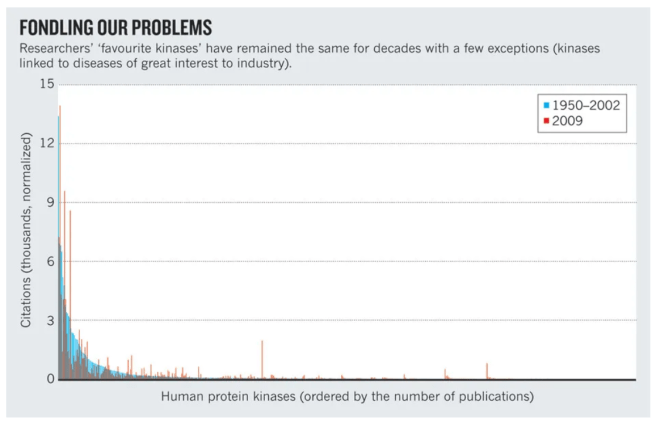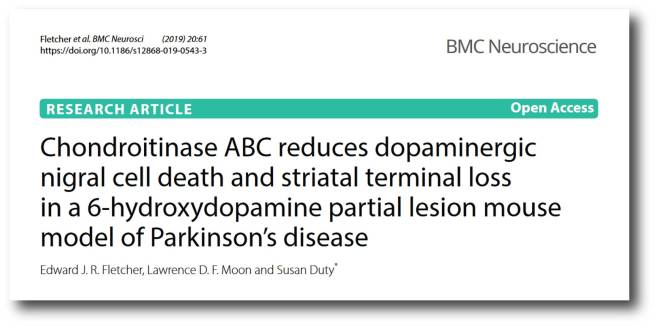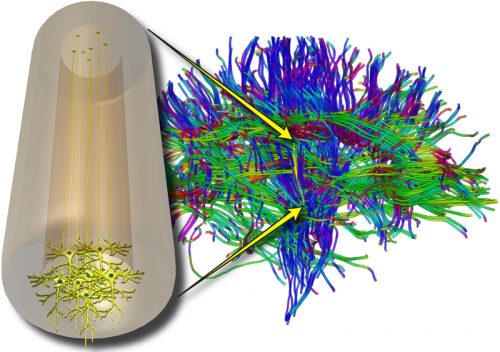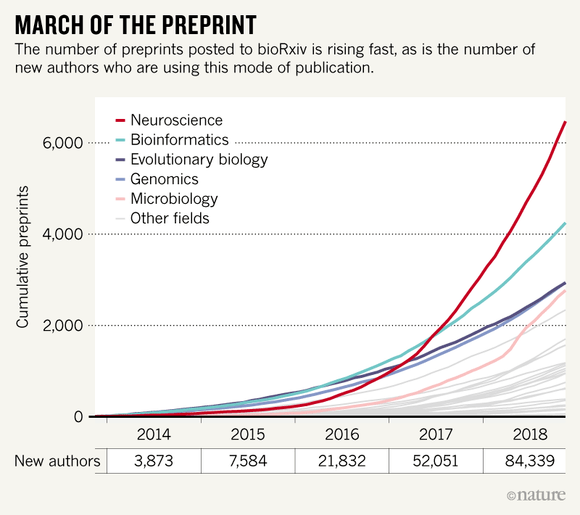|
Here at the Science of Parkinson’s, we don’t like making predictions – that’s a mug’s game. We would rather explore interesting ideas based around what we hope to see happen in 2020 – discussing different ways and means by which they could occur – in the hope that some one will pick up the ball and run with it (ideally, they already have the ball and we are as usual naively unaware). In today’s post, we will outline the SoPD wish list for 2020.
|
 Source: Amazon
Source: Amazon
In his excellent biography on Leonado Da Vinci, author Walter Isaacson drops a beautiful hook in the middle of the book to compel the reader on.
As you may be aware, Da Vinci kept lots of journals throughout his life, and he was constantly making drawings and notes. On almost every page, however, he also made list of things to do, and these list suggest an incredibly curious mind.
Isaacson listed a few examples, including:
“Get the master of arithmetic to show you how to square a triangle… Ask Giannino the Bombardier about how the tower of Ferrara is walled… Ask Benedetto Protinari by what means they walk on ice in Flanders… Get a master of hydraulics to tell you how to repair a lock, canal and mill in the Lombard manner…”
 Source: Kottke
Source: Kottke
But in the middle of the book, Isaacson gives the reader his personal favourite:
“Describe the tongue of the woodpecker”
And then he continues:
“‘Describe the tongue of the woodpecker,’ he instructs himself. Who on earth would decide one day, for no apparent reason, that he wanted to know what the tongue of a woodpecker looks like? How would you even find out? It’s not information Leonardo needed to paint a picture or even to understand the flight of birds”
Wait. What? Woodpeckers have tongues?!?
Yes, they do.
But the remarkable feature of their tongue is its length.
At 10 cm (or 3.9 inches), the woodpecker’s tongue accounts for about one third of its total body length. It can extend more than three times the length of the bird’s actual beak.
Woodpecker using its tongue to extract a beetle larva. Source: Warrenphotographic
Stop and think about that for a moment, and then understand that if your tongue was of a similar scale it would stretch out to almost half a metre (1.5-2 ft).
Interesting. But what does this have to do with Parkinson’s?
Well, ask yourself the question that apparently fascinated Da Vinci:
Where does the woodpecker store it’s tongue when not in use?
It is this Da Vinci-like curiousity that I am hoping will lead folks in the Parkinson’s community (not just researchers) to explore new ideas/concepts that have previously been little explored. And there is certainly a lot of opportunity for this in 2020.
Following on from the previous post which outlined what is scheduled for 2020 (Click here to read that post), this post is a wish list of some trends/themes I am hoping to see over the next 12 months (beyond the obvious of course).
And they begin with:
1. The uncharted territories
The announcement of MASSIVE new grant funding opportunities in Parkinson’s research in 2019 (such as the Aligning Science Across Parkinson’s (ASAP – click here to read a recent SoPD post on this topic) or the Chan Zuckerberg Initiative) bodes well for the future of Parkinson’s research. There were really exciting developments for the scientific community, which will be transformational for the lucky research groups that are awarded some of the funding.
But a prerequisite of any funding applications to these organisations should be that the applicants are exploring completely uncharted territory.
No small iterative steps with subtle tweaks on an old idea.
There are already substantial research funds available for a new “alpha synuclein aggreation inhibiting approach” or an analysis of “a particular LRRK2 function”. It would be disappointing if these new funding resources that were initiated in 2019 fund research in these areas of well-trodden ground in the hope of getting an easy win.
We need to be encouraging researchers to be bold and take chances.
A commentary published 8 years ago, which noted the low number of proteins actually researched, probably still applies today as the research community stick with their favourites.
 Source: Nature
Source: Nature
If you go to the medical research search engine Pubmed and type in the search terms “alpha synuclein Parkinson’s“, you will find that there are over 8600 research reports mentioning this Parkinson’s-associated protein/gene. But if you type in the search terms “EIF4G1 Parkinson’s“, you will find that there are only 49 research reports on this Parkinson’s-associated protein/gene (and many of those reports are review articles – we know very little about EIF4G1).
It would be easy to argue that we are putting a lot of eggs in just a few baskets.
To be fair, however, this situation is changing.
It is being driven by a new age of hypothesis-less investigation. Researchers are using wonderous new tools like random CRISPR-based screens to identify novel genes/proteins that are involved in the many aspects of the underlying biology of Parkinson’s (Click here to read a previous SoPD about CRISPR). And this is encouraging the shift towards fertile new pastures.
And I am not for a second suggesting that we stop research on the well-researched areas (like alpha synuclein) – there are significant research funds available for that work to continue. In addition, there will be significant overlaps – some of the new proteins will be found to interact with well known Parkinson’s players (such as LRRK2 and PARKIN).
All I am saying is that we need to take this opportunity and look at what we aren’t looking at (my poor attempt at a Rumsfeldian unknown unknown).
And this doesn’t just apply to proteins and genes, it relates to many aspects of Parkinson’s research.
For example, there are a number of biotech companies that I am quietly watching based on their alternative approaches.
One of them is called Curasen.
 This company is developing therapies that target a region of the brain called the locus coeruleus.
This company is developing therapies that target a region of the brain called the locus coeruleus.
This is a population of cells that is believed to be affected by Parkinson’s before the dopamine neurons start disappearing. And there is evidence to suggest that in both Alzheimer’s and Parkinson’s, this is the region of greatest neuronal cell loss (even more so than the substantia nigra in Parkinson’s – click here to read more about this).
Three year old Curasen has started clinical testing of several molecules (in the Netherlands and New Zealand – Click here and here to read more about these studies) and while they have not shared much information yet, I simply like the fact that they are exploring a group of neurons other than the much focused on dopamine neurons.
It is that kind of approach that I am hoping to see more of in 2020.
2. A focus on rejuvenation
In the last SoPD post (Click here to read that post), we discussed the 3 components required for any “curative therapy” for Parkinson’s:
- A disease halting mechanism
- A neuroprotective agent
- Some form of restorative therapy
One of the unspoken take away messages from that post was that while we have a wide variety of potential approaches for component 1 & 2, we are rather single minded with regards to the third requirement.
The bulk of the research focused on a restorative therapy for Parkinson’s is centred around the transplantation of stem cell-derived dopamine neurons to replace the cells that are lost in Parkinson’s.
And these stem cell-based therapy will certainly be in the news in 2020.
There will be the completion of the ISCO Phase I cell transplantation clinical trial in Australia and the completion of the Chinese First Affiliated Hospital of Zhengzhou University/Prof Qi Zhou” study.

Transplanted dopamine neurons. Source: Sciencedirect
In addition, we will hopefully see new entrants into the clinical testing of cell transplantation for Parkinson’s (for example, Aspen Neuroscience and Bluerock/Bayer, and perhaps even Fujifilm/Cellular Dynamics & Nova Nordisk).
But in 2020, my wish list includes a desire for research focused on alternative approaches to rejuvenation.
The advances in stem cell based methods should be applauded. Getting this technology to the clinic has been an incredible endeavour that folks in the research community have devoted their lives to. But stem cells should not be viewed as the only path forward for rejuvenation. And the curiousity that drew Da Vinci to inquire about the Woodpecker’s tongue, should draw us all to seek additional methods of encouraging rejuvenation in the Parkinsonian brain.
And there are already different approaches being explored.
For example, removing inhibitory factors in the adult brain (which may be blocking rejuvenation) could make for a more conducive environment for new growth. I was encouraged in 2019 to see a publication from Dr Susan Duty’s lab in London investigating Chondroitinase ABC treatment in models of Parkinson’s.
 (We’ll be looking at this report in an up-coming SoPD post)
(We’ll be looking at this report in an up-coming SoPD post)
Chondroitin Sulfate Proteoglycans (or CSPGs) are proteins that are involved in the inhibition of axon regeneration after various forms of damage in the brain (such as stroke and spinal cord injury). The enzyme Chondroitinase ABC acts by degrading these CSPGs, and providing a more supportive environment for new fibre outgrowth.
Chondroitinase ABC is being actively investigated for spinal cord injury (for example, click here to read about the CHASE IT project).
In models of Parkinsons, Dr Duty and colleagues reported chondroitinase ABC treatment provided significant protection (the model involved a partial 6OHDA lesion of nigrostriatal tract), but the degree of protection was not sufficient to improve motor outcomes (Click here to read more about this). Perhaps, removal of inhibitory molecules alone is not enough and other growth-inducing factors are required in combination. But it is encouraging to see an alternative approach to rejuvenation being investigated.
There is also work by Dr Kacy Cullen in Philadelphia, who has recently been funded by the Michael J Fox Foundation to further his work on rebuilding the nigrostriatal pathway (Click here to read more about this).
The nigrostriatal pathway is the structure in the brain that involves the dopamine neurons which are so severely affected by Parkinson’s.

The nigrostriatal pathway in black. Source: MyBrainNotes
Dopamine neurons in the substantia nigra project their branches up along the nigrostriatal pathway into the middle of the brain, where they release dopamine in regions like the putamen (see image above). Dr Cullen and his team have been exploring methods of encouraging dopamine neurons to send their branches (or axons) across great distances so that they can re-establish the nigrostriatal pathway.
 Source: PMC
Source: PMC
They have published some of this research (Click here and here to read more about this) and click here to read a good recent review by Dr Cullen and colleagues on this topic.
And we may not even need to transplant cells into the brain of people with Parkinson’s. There are research efforts afoot that are attempting to directly reprogramme cells inside the brain.

Title: Induction of functional dopamine neurons from human astrocytes in vitro and mouse astrocytes in a Parkinson’s disease model
Authors: di Val Cervo PR, Romanov RA, Spigolon G, Masini D, Martín-Montañez E, Toledo EM, La Manno G, Feyder M, Pifl C, Ng YH, Sánchez SP, Linnarsson S, Wernig M, Harkany T, Fisone G, Arenas E.
Journal: Nature Biotechnology (2017) doi:10.1038/nbt.3835
PMID: 28398344
These researchers converted astrocytes (helper cells in the brain) inside the brains of mice into to dopamine neurons by injecting viruses that were engineered to reprogramme the cells and turn them into neurons. 13 weeks after the viruses were delivered, the researchers observed improvements in their models of Parkinson’s, but they concluded that with further optimisation was required (Click here to read a previous SoPD post about this topic).
I am hoping to learn more about these (and other) novel approaches to rejuvenation in 2020.
And that brings me to my last wish (three is not too much to ask for is it?):
3. OPEN. OPEN. OPEN
Most researchers have learnt their trade craft in an environment of short term contracts, intense competition, unceasing need to publish ever more impactfully research, and limited opportunity for upward mobility or career advance.
It is a brutal, ruthless and unforgiving world, where one is constantly terrified of being ‘scooped’ by competitors who publish a result first and jeopardize one’s potential future funding opportunities.
This set of circumstances encourages scientists to horde data and trust no one.
Kind of sad, right?
And in the midst of all of this terrible angst, there are lots of feel good efforts being proposed regarding the sharing of data and openess of ideas because it would be better for everyone. Yeah?
Having lived the research life I know that what I’m about to write is a massive ask, but in 2020 I am hoping to see more openess in research.
And the thing is that it does not necessarily require too much of a mindset change for researchers.
Changing the culture of science is not going to change over night. And it needs to be driven by examples of openness and sharing actually working.
One encouraging example is company called M4K Pharma.
Medicines4Kids (M4K) pharma is focused on discovering and developing a treatment for diffuse intrinsic pontine glioma. This is a very rare and fatal pediatric brain cancer. It is a terrible disease for which there are no chemotherapies that provide benefit, and nearly every child diagnosed with the condition dies within two years.
In order to do this, MK4 makes all of its research data freely available in the public domain.
This is completely bonkers according to all of the old ways of doing things, but this is what MK4 do. Their data is completely accessible via monthly updates on their blog and YouTube Channel.
M4K is wholly owned by the Agora Open Science Trust, and if it succeeds in finding a new therapy for intrinsic pontine glioma, any and all profits the Trust makes will be used to launch the next open science M4K program for a rare pediatric condition.
The organisation is encouraging the sharing their own data and results to help advance the research field – via facilitating collaboration and independent scientific inquiry by others – as well as avoiding too much duplication of research efforts.
For those interested in learning more about M4K, click here to read a review article describing it.
And while M4K may seem like a radical attempt to change the status quo regarding openness, other more conducive efforts do seem to be catching on.
While I appreciate the added value that a good peer-review process provides, I really like the fact that the preprint repository bioRxiv has become a popular place for researchers to share their findings before they are actually published.
And it is particularly pleasing because neuroscience researchers have been such major adopters of this trend (take note late adapters):
 Source: Nature
Source: Nature
Given the harsh environment that is academic research, it is a really big deal to ask scientists to be more open and sharing with their techniques, data and findings. But with the right structure and set of incentives, change can be brought to a seemingly dyfunctional system.
And hopefully we will see more of the slow shift in this direction in 2020.
So what does it all mean?
I recently met a kindly gentleman at a Parkinson’s support group meeting a month or so back. He came up to me and told me that he really likes my website.
“Thank you” I said, “I’m glad you like it”
Before I had finished, however, he added “You know, you’re not an influencer or anything, but your efforts are appreciated“.
His comment tickled me pink and put me in my wholly accepted place – I am happily a mere pawn in the game. But given my ‘not an influencer’ status, this post feels rather self indulgent. And while it seemed like a good idea as I was putting the ‘road ahead’ post together, now as I proof read it, this particular post flows like a muddled set of ideas.
Although I am not happy with it, in the interests of sharing and openness, I’ll put it out into the void and maybe some part of it will resonate with someone.
Back to the normally formatted material in the next post.
ADDENDUM: The Woodpecker’s Tongue
(SPOILER ALERT: do not read on if you intend to read the Da Vinci biography)
From the coda of “Da Vinci” by Walter Isaacson:
“The tongue of a woodpecker can extend more than three times the length of its bill. When not in use, it retracts into the skull and its cartilage-like structure continues past the jaw to wrap around the bird’s head and then curve down to its nostril. In addition to digging out grubs from a tree, the long tongue protects the woodpecker’s brain. When the bird smashes its beak repeatedly into tree bark, the force exerted on its head is ten times what would kill a human. But its bizarre tongue and supporting structure act as a cushion, shielding the brain from shock”

All of the material on this website is licensed under a
Creative Commons Attribution 4.0 International License
You can do whatever you like!
The banner for today’s post was sourced from Howtogeek






Simon,
Thanks for keeping up with your blog. For what it’s worth,I would support your promotion from “not an influencer” to “should be an influencer”!
My wish list for 2020 is very simple: find a way to objectively measure PD, accurate to within 1%. This must work in the short term (e.g. to follow the effects of a dose of levodopa), intermediate term (e.g. to follow the effects of gut bacteria) and for the long term, to measure progression slowing therapies. The measurement must be automatic and the results must be freely available. As it is, I think many possible leads are lost in the “noise” of the data.
Does anyone know the true accuracy of current approaches?
John
LikeLike
Hi John,
I hope all is well. I actually have great contempt for the word ‘influencer’ (I am happily a wall flower thank you), but was amused by my friend’s wording and thought I would share.
Fingers crossed that your ‘simple’ wish list is granted before mine!
Kind regards,
Simon
LikeLike
You are the “nigrostriatal pathway” between those of us with PD and the research that supports our hope. I thoroughly enjoyed the post.
LikeLiked by 1 person